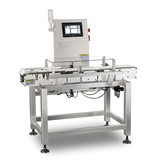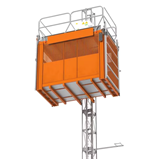The new edition of Australian Construction Outlook - Non-Residential Building is the latest report in Macromonitor's series on the outlook for construction in Australia.
"The outlook for Australia's non-residential building sector has become more positive, but it remains a tale of two distinct sub-sectors, each moving in opposite directions," says the report's author and Macromonitor director, Nigel Hatcher.
Mr Hatcher notes that, "Recently released ABS data confirm an upward correction has begun. The value of non-residential building approvals, which had been very weak for nine months from September 2008 to May 2009, showed the first signs of recovery in June 2009 and have since rebounded strongly. Approvals in the September quarter 2009 were up 69% on the June quarter, in seasonally adjusted terms."
"But this rebound has been almost entirely due to the boost to education building coming from the Commonwealth stimulus package, and health building, driven by state government spending, will also play an important role in driving the upturn during 2010," according to Mr Hatcher.
"Meanwhile, commercial and industrial building remains in the midst of the most severe downturn since the early 1990s collapse," says Hatcher.
The new report notes that, in 2008/09, the downturn in commercial and industrial building dominated the sector, with total non-residential building commencements falling by 20% in real terms.
The report forecasts that, in 2009/10, non-residential building commencements will see positive growth of 11%, as the upturn in government spending moves into full swing, more than offsetting the downturn in commercial and industrial work.
Mr Hatcher notes that, "This is the first time that a program of Government building work has been of adequate magnitude to offset a major downturn in commercial building in Australia."
Looking beyond the current financial year, Macromonitor expects the pattern in each sub-sector to reverse itself, with commercial and industrial building entering an upturn in 2010/11, while social and institutional building commencements will turn down sharply as the government programs wind down.
The report notes that the major driver of the current upturn in social and institutional building is the Commonwealth Government's Building the Education Revolution package, which comes on top of other education funding schemes such as the Education Investment Fund.
In the health sector, Macromonitor expects growth to be driven by major hospital projects, such as Royal North Shore redevelopment in Sydney, a new Gold Coast University Hospital, the new Royal Adelaide Hospital, Fiona Stanley Hospital in Perth and the new Queensland Children's Hospital amongst others.
In the commercial and industrial building sector, Macromonitor expects another sharp decline over the full 2009/10 financial year, of 23% in real terms, which follows a 30% drop in 2008/09.
Mr Hatcher says, "The inter-related problems of lending constraints, weak demand for space and oversupply, will continue to drive commercial building activity lower in 2010. New additions to space remain high, as completions flow through from the 2007/08 peak level of commencements, while demand for space has plunged."
In the office sector, additions to space resulting from the building boom continue to come onto the market, and Macromonitor expects 2009/10 to be the peak year of gross additions to office space in Australia. "But this large influx of new space has coincided with a major downturn in demand for space. The average vacancy rate across major office markets has risen to around 9% and is forecast to rise above 12% by mid-2010," according to Mr Hatcher.
"In the hotel sector, new room additions remain very high, while growth in demand for room nights has plunged, driving down occupancy rates and revenue per room," notes Hatcher. "In the retail sector, the decline in retail spending weakened the demand for space and the rate of rental growth, which is still impacting on new retail building commencements."
The Macromonitor report concludes that an upturn in commercial and industrial building commencements will require both an improved flow of financing, as well as sustained growth in demand for space and an absorption of the current oversupply. The report is forecasting the next upturn in commercial and industrial building commencements to begin in 2010/11, gathering momentum in 2011/12.
- Suppliers
- New to IndustrySearch? Book a Demo
- Advertise with us
- Login
- Email Marketing
- Buyers
- Get Quotes
- Articles & Ideas
- Login
- Subscribe to newsletter
- My Details
- Get Quotes
- Automation & Control
- Automotive Workshop Equipment
- Cleaning Equipment
- Construction & Heavy Machinery
- Conveyor Systems & Components
- Cranes & Hoists
- Electrical & Power Generation Equipment
- Electronic Components
- Farming & Agriculture
- Food & Beverage Processing
- Forklifts & Attachments
- Hydraulic & Pneumatic Equipment
- Industrial Materials, Tools & Components
- Industrial Pumps
- IT Hardware & Industrial Computing
- IT Software & Applications
- Laboratory Equipment & Instruments
- Manufacturing & Industrial Equipment
- Material Handling & Lifting
- Metalworking & Machining
- Mining Equipment & Machinery
- Packaging & Labelling Machinery
- Pallet Management
- Personal Protective Equipment
- Security & Surveillance
- Test & Measurement
- Transport Equipment
- Trucks & Trailers
- Warehouse Storage & Racking
- Waste & Environmental Management
- Welding Machines & Accessories
- Woodworking & Joinery Machines
- Workplace Equipment
- Workplace Safety Equipment
- Get Quotes
- Automation & Control
- Automotive Workshop Equipment
- Cleaning Equipment
- Construction & Heavy Machinery
- Conveyor Systems & Components
- Cranes & Hoists
- Electrical & Power Generation Equipment
- Electronic Components
- Farming & Agriculture
- Food & Beverage Processing
- Forklifts & Attachments
- Hydraulic & Pneumatic Equipment
- Industrial Materials, Tools & Components
- Industrial Pumps
- IT Hardware & Industrial Computing
- IT Software & Applications
- Laboratory Equipment & Instruments
- Manufacturing & Industrial Equipment
- Material Handling & Lifting
- Metalworking & Machining
- Mining Equipment & Machinery
- Packaging & Labelling Machinery
- Pallet Management
- Personal Protective Equipment
- Security & Surveillance
- Test & Measurement
- Transport Equipment
- Trucks & Trailers
- Warehouse Storage & Racking
- Waste & Environmental Management
- Welding Machines & Accessories
- Woodworking & Joinery Machines
- Workplace Equipment
- Workplace Safety Equipment
Trusted by 1.2 million Australian industrial buyers
Buyers
- Discover products & solutions
- Login
- Subscribe To Newsletter
- Browse All Products
- Read Articles
Suppliers
Advertise
- Promote your products & solutions
- New to IndustrySearch? Book a Demo
- Login / Forgot Password
- Advertise Your Products
- Success Stories
- Email Marketing
- Suppliers
- Advertise with us
- Login
- Email Marketing
- Buyers
- Get Quotes
- Articles & Ideas
- Login
- Subscribe to newsletter
- My Details
Get Quotes
- Automation & Control
- Automotive Workshop Equipment
- Cleaning Equipment
- Construction & Heavy Machinery
- Conveyor Systems & Components
- Cranes & Hoists
- Electrical & Power Generation Equipment
- Electronic Components
- Farming & Agriculture
- Food & Beverage Processing
- Forklifts & Attachments
- Hydraulic & Pneumatic Equipment
- Industrial Materials, Tools & Components
- Industrial Pumps
- IT Hardware & Industrial Computing
- IT Software & Applications
- Laboratory Equipment & Instruments
- Manufacturing & Industrial Equipment
- Material Handling & Lifting
- Metalworking & Machining
- Mining Equipment & Machinery
- Packaging & Labelling Machinery
- Pallet Management
- Personal Protective Equipment
- Security & Surveillance
- Test & Measurement
- Transport Equipment
- Trucks & Trailers
- Warehouse Storage & Racking
- Waste & Environmental Management
- Welding Machines & Accessories
- Woodworking & Joinery Machines
- Workplace Equipment
- Workplace Safety Equipment
Get Quotes
- Automation & Control
- Automotive Workshop Equipment
- Cleaning Equipment
- Construction & Heavy Machinery
- Conveyor Systems & Components
- Cranes & Hoists
- Electrical & Power Generation Equipment
- Electronic Components
- Farming & Agriculture
- Food & Beverage Processing
- Forklifts & Attachments
- Hydraulic & Pneumatic Equipment
- Industrial Materials, Tools & Components
- Industrial Pumps
- IT Hardware & Industrial Computing
- IT Software & Applications
- Laboratory Equipment & Instruments
- Manufacturing & Industrial Equipment
- Material Handling & Lifting
- Metalworking & Machining
- Mining Equipment & Machinery
- Packaging & Labelling Machinery
- Pallet Management
- Personal Protective Equipment
- Security & Surveillance
- Test & Measurement
- Transport Equipment
- Trucks & Trailers
- Warehouse Storage & Racking
- Waste & Environmental Management
- Welding Machines & Accessories
- Woodworking & Joinery Machines
- Workplace Equipment
- Workplace Safety Equipment
Trusted by 1.2 million Australian industrial buyers


-160x160-state_article-rel-cat.png)






-160x160-state_article-rel-cat.png)













